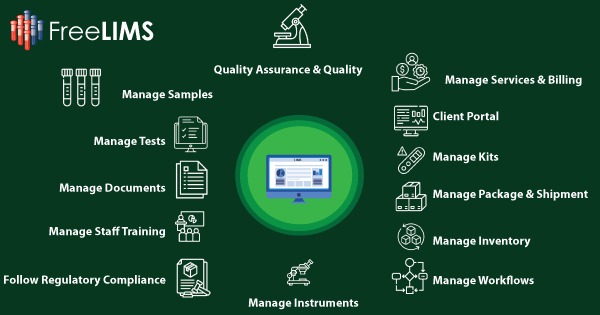Laboratory Information Management System (LIMS): An Introduction
A Laboratory Information Management System (LIMS) is a software-based solution that can help labs effectively manage laboratory data, thereby increasing the efficiency of various lab operations. A LIMS is an interface between the laboratory staff and the database where all the information is stored.
Essential functions of a LIMS include


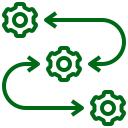
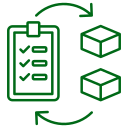











What is a LIMS System Used for? Who Uses a LIMS?
A LIMS serves various purposes across different industries and types of laboratories.
Here are some unique applications and use cases of a LIMS system:
Biobanking: A LIMS is instrumental in biobanking, where it manages the storage, retrieval, and tracking of biological samples such as tissues, blood, and DNA. A biobanking LIMS ensures the preservation of sample and data integrity over time, making it indispensable for research in genomics, personalized medicine, and epidemiology research.
Cannabis Testing: A LIMS is essential in cannabis testing laboratories to ensure accurate, efficient, and compliant testing processes. A cannabis LIMS helps manage sample tracking, data integrity, and regulatory compliance, which are critical in the cannabis industry due to strict quality and safety standards. It streamlines workflows, minimizes errors, and provides traceability, ultimately enhancing the reliability of test results and the credibility of the laboratory.
Environmental Testing: A LIMS aids environmental laboratories in monitoring air and water quality, soil composition, and contaminants. An environmental LIMS helps track samples collected from various locations. A LIMS streamlines environmental testing laboratories by automating processes, adapting workflows for new contaminants, and ensuring compliance with evolving regulations.
Food Safety and Quality Control: In the food industry, LIMS plays a pivotal role in ensuring the safety and quality of food. It assists in tracking ingredients, conducting quality tests, and maintaining compliance with food safety regulations, reducing the risk of foodborne illnesses.
Forensic Science: A LIMS is crucial in forensic laboratories for managing evidence, tracking chain of custody, and securely managing case-related documents. It aids in solving crimes by maintaining the integrity of evidence throughout investigations.
Clinical Trials: A LIMS is used to streamline clinical trial data management. A clinical research LIMS helps organize patient information, track test results from all phases of clinical trials and securely share them with all stakeholders, and ensure adherence to rigorous regulatory requirements.
Oil and Gas Analysis: A LIMS assists laboratories in the oil and gas industry by managing the analysis of hydrocarbon samples, ensuring compliance with environmental regulations, and optimizing production processes.
Agriculture Testing: Agriculture testing laboratories use a LIMS to deliver accurate and fast test results, automate experimental workflows, improve workflow standardization, generate custom CoAs, and meet regulatory guidelines while eliminating time-consuming manual processes. In agricultural research, LIMS helps manage data related to crop and soil analysis, providing efficient breeding programs, pest management, and the development of new agricultural products.
Water Treatment Plants: LIMS systems can be employed in water treatment plants to monitor water quality, manage chemical usage, and ensure drinking water meets safety standards.
Pharmacovigilance: A LIMS is used in pharmacovigilance to track and manage adverse event reports related to pharmaceutical products, ensuring prompt investigation and regulatory compliance.
Nuclear Research: Laboratories involved in nuclear research benefit from LIMS for tracking and managing radioactive materials, maintaining compliance with safety protocols, and facilitating research in nuclear physics and energy. It helps manage the monitoring of samples in and around nuclear facilities. This includes environmental samples from various sources such as soil, air, water, and organisms, all crucial for ensuring public safety in both power generation and decommissioning phases. LIMS helps maintain rigorous compliance with strict regulations, ensuring accurate testing, secure data management, statistical reporting, and timely submission of required reports to government environment agencies, thereby managing the intricacies of radiochemical monitoring programs.
Molecular Diagnostics: In clinical laboratories, LIMS assists in managing data from molecular diagnostic tests, supporting the treatment and diagnosis of genetic and infectious diseases.
Material Science: Material science laboratories utilize LIMS to organize data related to material properties, ensuring the development of advanced materials for various applications, such as aerospace and electronics.
Why Use a LIMS?
Data Organization: LIMS helps keep all lab data organized.
Your lab’s data is like a giant puzzle. LIMS puts all the pieces in the right places so you can easily find what you need.
Following SOPs: A LIMS can facilitate the recording and tracking of non-conformances to SOPs by monitoring each step in a sample processing workflow. It enables lab managers to initiate corrective and preventive actions to address deviations and prevent their recurrence.

Getting Faster Results: LIMS can do tasks faster than humans. It’s like having a speedy assistant who can quickly analyze data and generate reports, which means you get your results faster.

Less Paperwork: Remember all those forms and documents? LIMS stores everything digitally so that you can say goodbye to mountains of paperwork. Furthermore, it enables labs to reduce their carbon footprint and digitize their operations.
Custom Workflows: Think of LIMS as a versatile tool. You can configure it to fit your lab’s unique needs. It’s like having a toolbelt with all the right tools for your job.

Suitable for Labs of All Sizes: Whether you work in a tiny lab or a massive research facility, a scalable LIMS can adapt to your lab’s size and workflows.
How to Choose a LIMS?
Choosing the right LIMS is a daunting task and requires meticulous planning. You want it to fit just right and make your work easier. Here are some key points on choosing the best LIMS for your lab:
✔ Know Your Lab’s Needs: Are you a medical lab, a research lab, or a food testing lab? Make a list of what your lab needs from a LIMS. Do you need to track samples, manage results, or handle much data?
✔ User-Friendly Interface: Look for a LIMS with an easy-to-use interface. It should feel like a comfortable pair of shoes, not something that makes you stumble. Check if it has a clean and intuitive design.
✔ Customization and Configurability: One size doesn’t fit all! Your LIMS should be adaptable to your lab’s unique processes. A good LIMS lets you tweak it to fit your lab perfectly without the need to do coding or contact the LIMS provider everytime you change your workflow.
✔ Scalability: Think about the future. Is your lab growing? Choose a LIMS that can grow as your lab grows. It should be able to handle more samples, data, and users as your lab expands.
✔ Compliance and Security: Make sure the LIMS has functionality to help you meet the regulations and standards relevant to your lab. It should also keep your data safe and secure, just like a locked vault.
✔ Training and Support: You don’t want a tool that leaves you high and dry. Look for a LIMS provider that offers training and support to help you make the most of the system.
✔ Budget: LIMS come in different price ranges. Consider your budget and find a LIMS that offers the features you need at an affordable cost.
✔ Feedback and Reviews: Just as you look for user reviews before buying a new gadget, check out what other labs are saying about the LIMS you’re considering. Are they happy with it?
✔ Trial Run: Try before you buy. Many LIMS providers offer a trial period. It’s like test-driving a car to see if it fits you well.
✔ Integration: Make sure the LIMS can play nicely with other software and instruments in your lab. It should work well with the tools you already have.
Remember, choosing a LIMS is like finding the perfect tool for your lab. Take your time, research, and pick the one that makes your lab work smoother and more efficient.
Types of LIMS System
Let’s break down the three most common LIMS systems:

Offline LIMS:
Offline LIMS, as the name suggests, is a type of LIMS that operates without a constant internet connection. It is usually installed on a local server within the laboratory.
Key Characteristics:
- It functions independently within the lab’s network.
- Data is stored and processed locally on the lab’s servers.
- Access to the system is limited to the laboratory’s physical premises.
Advantages:
- Data security: As data remains within the lab’s premises, it may be perceived as more secure.
- Full control: Labs have complete control over the system and data.
Challenges:
- Limited accessibility: Users can only access the system while on-site.
- Data backup and recovery: Labs are responsible for data backup and recovery processes.
Standalone or Web-Based LIMS:
Standalone or web-based LIMS operates on a local server but can be accessed remotely through a web interface.
Key Characteristics:
- Data is stored locally, but users can access the system via web browsers from outside the lab.
- It offers more flexibility in terms of user access.
- It often requires a reliable internet connection.
Advantages:
- Remote access: Users can access the system from various locations, offering flexibility.
- Collaboration: Facilitates collaboration among different laboratories or partners.
Challenges:
- Maintenance: Requires local server maintenance and IT support.
- Potential security concerns: Data is still stored on-site, which may be lost due to natural hazards, theft, and other factors.
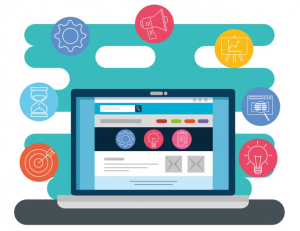

Cloud-Based LIMS:
A cloud-based LIMS is hosted on remote servers, and users access it online.
Key Characteristics:
- Data is stored off-site, typically in secure data centers.
- Accessible from anywhere with an internet connection.
- The LIMS provider manages maintenance, updates, and security.
Advantages:
- Accessibility: Users can log in to the system from any location with internet access.
- Automatic updates: The LIMS provider manages updates and maintenance.
- Scalability: Easy to scale as lab needs change.
Challenges:
- Data security and privacy: Concerns may arise about data being stored off-site.
- Internet dependence: Requires a reliable internet connection.
Each type of LIMS system has its own set of advantages and considerations. The choice of LIMS type depends on factors such as the lab’s specific needs, budget, security requirements, and the level of accessibility and control desired by the laboratory.
Key Differences Between Traditional LIMS And Modern LIMS
| Aspect | Traditional LIMS (On-Premise LIMS) | Modern LIMS (Cloud-based SaaS LIMS) |
| User Experience and Accessibility | Complex interface and limited accessibility | User-friendly interface and worldwide accessibility |
| Scalability and Flexibility | Limited scalability and customization | Highly scalable and configurable |
| Integration and Connectivity | Complex and costly integrations | Seamless integration with various systems free of charge or at an affordable cost |
| Data Analytics and Insights | Limited or no analytics capabilities | Robust data analytics capabilities |
| Cost and Total Ownership | High upfront costs and maintenance | Subscription-based, no upfront cost |
This table highlights the key differences between traditional LIMS and modern LIMS, showcasing how modern LIMS excel in multiple ways.
Conclusion
Industries such as food and beverage, healthcare, cannabis, clinical, biobanking, and others are evolving with time. The challenges that arise in the path of these industries concerning data management, automation, and regulatory compliance are also evolving. Massive amounts of data can cause significant data management problems, and solutions are needed to manage them effectively. One such data management solution is LIMS. However, selecting a LIMS is not an easy job. It requires careful consideration of multiple aspects such as requirements, budget, and IT infrastructure. A well-defined LIMS is central to a range of lab operations, which ensures enhanced productivity and high-quality data. Additionally, it should be able to manage various documents required during audits. To conclude, a LIMS is a solution that can yield significant profits if employed correctly.
FreeLIMS is a free, configurable, secure, cloud-based LIMS. FreeLIMS simplifies lab data management and enables labs to digitize their operations without spending money. FreeLIMS provides robust features that empower labs to organize their data efficiently, enhance productivity, and maintain compliance with industry standards.

